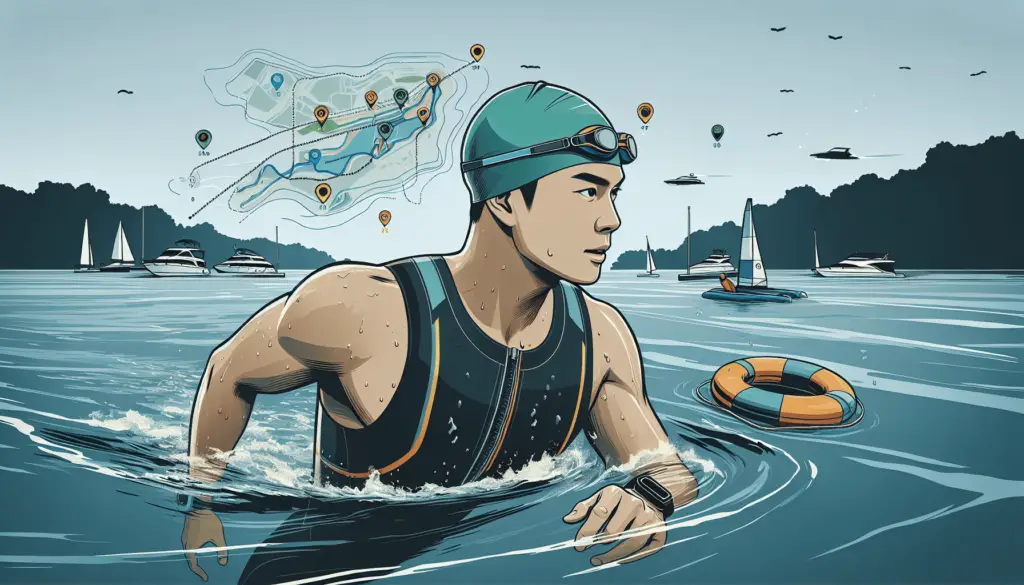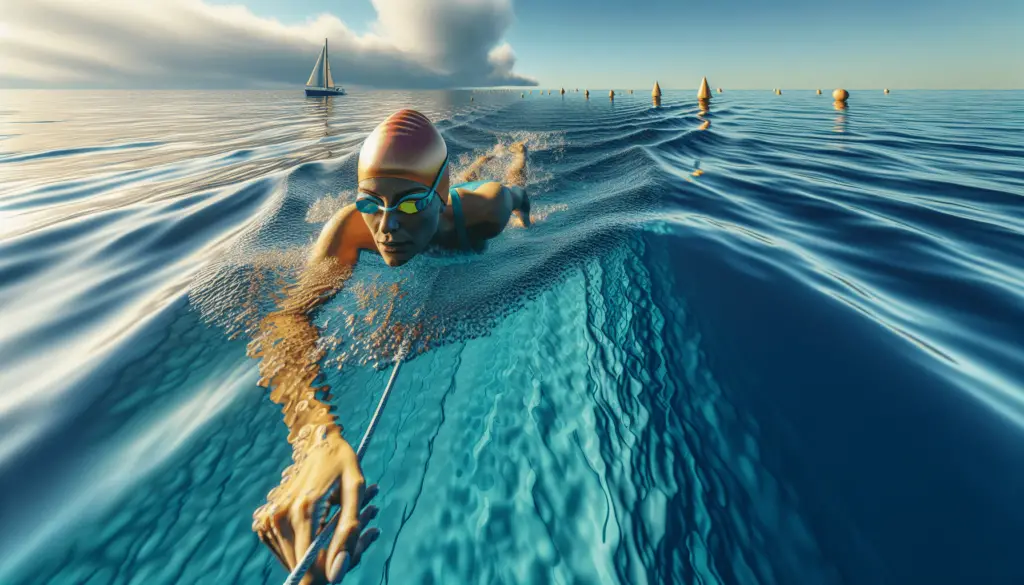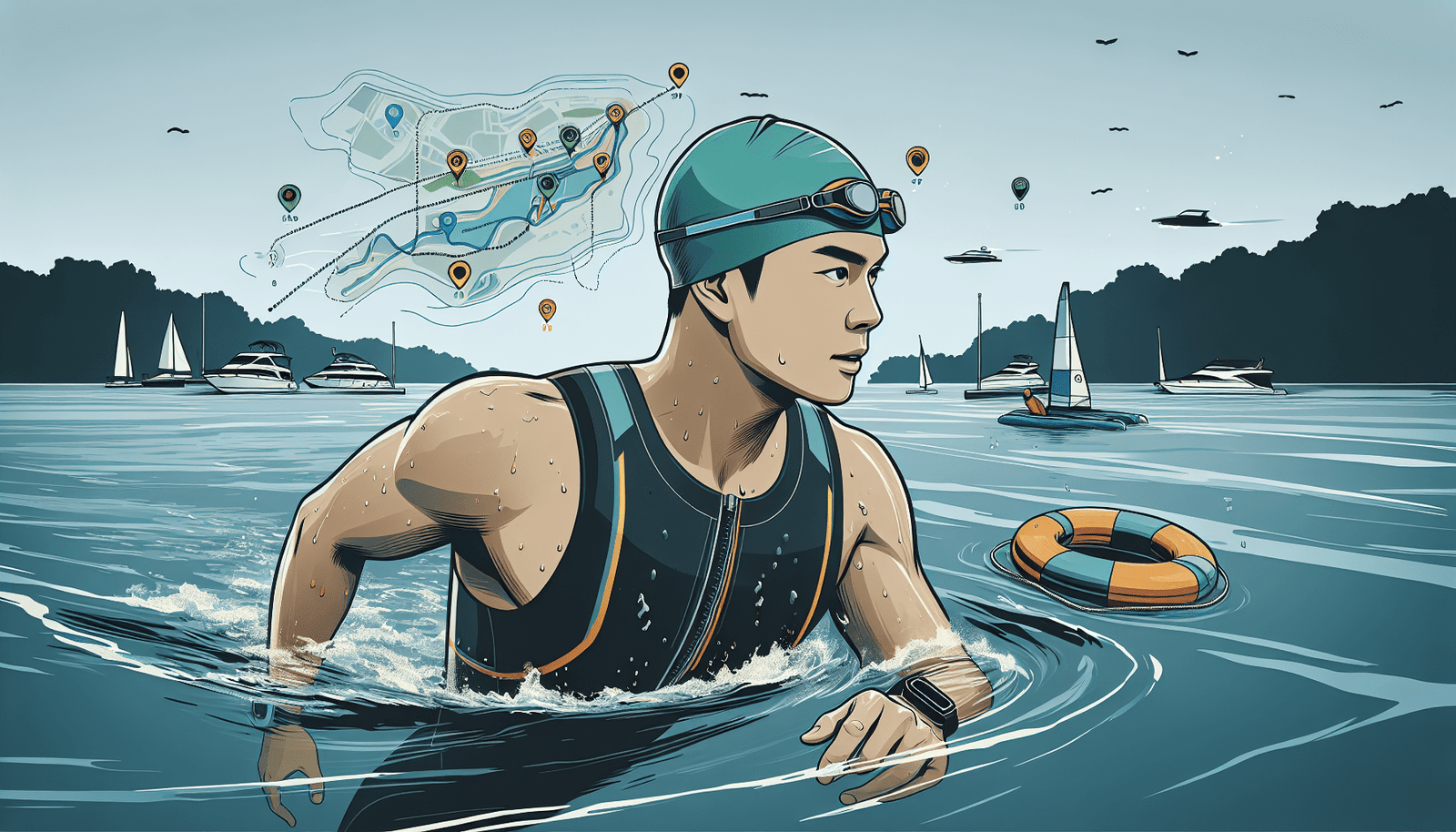Pearls of glittering sunlight cast webs of light on the open water, a guarded siren’s call beckoning you towards adventure. As you plan your open water sojourn, consider this guide, “Boating Safety Tips For Open Water Swimming“. It takes you by the hand and escorts you through the safety ropes of open water swimming from the perspective of both swimmer and boater. Here, you’ll discover how to be co-responsible for the safety of others, and yourself, in nature’s largest swimming pool. This guide is your gentle lighthouse, shining light on potential risks while highlighting the safety checks and measures necessary for an exhilarating, safe water adventure.

Understanding Open Water Swimming
Open water swimming is a remarkable journey where you’ll find yourself immersed in nature’s aquatic wonders.
Defining open water swimming
Open water swimming goes beyond the boundaries of your local pool, it refers to swimming in outdoor bodies of water such as lakes, rivers, oceans, and even bays. You’ll be exploring beautiful coastlines, meeting all kinds of marine life, and challenging yourself to push past perceived limits.
The differences between pool swimming and open water swimming
Swimming in a pool and open water are two very different pursuits. Pool swimming confines you within lanes with crystal-clear water underneath. Open water swimming, on the other hand, embraces the unpredictability of natural bodies of water. The absence of lane lines, the presence of marine life, variable water conditions, and formidable currents make this endeavor both challenging and rewarding.
Risks associated with open water swimming
Despite the thrill that open water swimming brings, there are risks attached. These include abrupt weather changes, encountering unexpected marine life, and the potential to get lost in sizable bodies of water. Knowledge, preparation, and regular practice can help you confidently tackle these challenges.
Benefits of open water swimming
Open water swimming does not only stimulate your spirit of adventure, but it also brings numerous health benefits. The cool water enhances circulation, the unpredictable conditions improve mental resilience, and the physical demands of the activity bolster your overall fitness.
Checking Weather Conditions
Being aware of current weather conditions is an essential step before embarking on an open water swim.
Importance of checking weather forecasts
The weather can greatly impact your open water swimming experience. Strong winds can stir up waves and make swimming arduous, while sudden thunderstorms can put you at risk. Thus, checking weather forecasts beforehand is vital to ensure safety.
How to interpret weather forecasts
Dig a little deeper than just the day’s temperature. Understand the wind speed and direction, surf conditions, and tidal times. Recognizing these elements will help you make informed decisions about when and where to swim.
Understanding the impact of weather on water conditions
Weather significantly impacts water conditions. Strong winds can agitate the water surface, making swimming harder. On the other hand, a warm, sunny day can increase the water temperature making for a more comfortable swim.
Choosing the Right Equipment
The right equipment can enhance your open water swimming experience and ensure safety.
The importance of a well-conditioned boat
Having a well-maintained boat is crucial for safety during open water swimming. The boat serves as the swimmer’s guiding point and emergency refuge, making its condition a paramount concern.
Choosing the right gear for open water swimming
Swimwear, goggles, and swim caps are basic but critical tools for your journey. Your swimwear should be comfortable and well-fitted. Your goggles need to offer good visibility and a secure fit, and a brightly colored swim cap will enhance visibility.
Understanding the features of safety equipment
Safety equipment serves as your life-saving tools in emergency situations. Flares, ropes, life jackets, and radios are among the equipment you should familiarize with and have onboard.
Safety equipment every boater should have
Radios, life jackets, first aid kits, distress signals, paddles, and a tow rope are all essential safety equipment that every boater should carry. These tools can inarguably make the difference during an unforeseen incident.
Learning Navigation Basics
Being able to navigate the open water is a vital skill for any open water swimmer.
Understanding the layout of the water body
Before entering the water, familiarize yourself with the topography of the swimming venue. This would mean knowing the depths, currents, and any particular hazards that could present themselves.
Learning about currents and tides
Understand the impact of currents and tides on your swim. Knowledge about the tide times and current strength can help you plan your swim appropriately, making the task less exhausting.
Using navigational tools like GPS
A handheld waterproof GPS can greatly aid navigation in open waters. This tool helps to track your progress and helps you remain on course.
Identifying landmarks and buoys
Keep an eye out for landmarks and buoys that can serve as guidelines during your swim. These reference points can help you relocate your position, keeping you on track.

Proper Communication
Effective communication is key to safety when you’re swimming open water.
Setting up communication methods with fellow boaters
Set up signals through your safety boat. These can be used to communicate directions, alert of any difficulties, or simply check-in.
Using the right distress signals
Everyone on the safety boat should understand and be able to use distress signals. A sound signal, like a whistle blast, or a visual signal, like raising and waving an arm, can call attention during an emergency.
Ensuring regular check-ins
Schedule regular check-ins with your safety boat to confirm you are doing okay, and everything is going as planned.
Training and Fitness
Open water swimming necessitates a strong level of swimming proficiency and physical fitness.
Ensuring swimming proficiency
Develop your swimming skills in a controlled environment before tackling open waters. A strong swimming ability will ensure you are more comfortable and confident in the water.
Conditioning exercises for open water swimming
Regular cardiovascular and strength training will condition your body for the demands of open water swimming. Practicing swimming in potentially challenging situations can also equip you for real-life situations.
Importance of professional swimming lessons
Partaking in structured swimming lessons can improve your technique, breathing, and endurance. They can also impart useful safety knowledge and emergency procedures necessary for open water swimming.
Developing a Safety Plan
A well-thought-out safety plan is an imperative component of open water swimming.
Designating a safety person
Assign a capable person on the safety boat to keep an eye on you at all times. This person should know what to do in case of emergency.
Creating a float plan
Prepare a float plan to provide information about the swim, the participants, the route, and the safety boat. Share this with a trusted contact ashore, in case emergency assistance becomes necessary.
Setting up emergency procedures
Familiarize all participants with immediate actions to be taken in case of emergencies. This includes the correct use of life jackets, distress signals, and first-aid.
Understanding rescue methods
Learn about rescue procedures used in open water swimming. Being able to perform these effectively can be life-saving in emergencies.
Boating Etiquettes
Open water swimming involves sharing the water with other water users, thus there’s need for etiquette.
Staying within designated swimming zones
Swim within the marked zones to steer clear of boat traffic and potential hazards. This ensures your safety and respects the space of others.
Respecting other boater’s space
Keep a safe distance from other boats to avoid accidents or hindering their activities. Similarly, signal your intentions clearly to avoid confusion.
Avoiding wildlife and marine life
Swimming in open waters brings you close to incredible wildlife, but respecting these creatures’ space and habitats is imperative. Never try to touch, feed, or disturb them in any way.
Maintaining Visibility
Maintaining visibility is crucial to your safety during an open water swim.
Using high visibility swim caps
Wearing a high visibility swim cap provides an easy way to be spotted in the water. Bright colors like orange or neon stand out against the water making you noticeable to your safety boat or other water users.
Staying in sight of safety boats
Maintaining a visible and close distance from safety boats can ensure quick aid in case of emergencies. Always swim within a range from which the boat can reach you quickly, should you need assistance.
Swimming in groups to increase visibility
Swimming in groups can increase visibility and safety. The combined strength can generate a larger draft for the safety boat to follow, making it easier for you to be spotted.
Dealing with Emergencies
Emergency situations can occur during an open water swim, being equipped to handle them is necessary.
First-aid essentials for boating
Understanding basic first aid protocols and carrying essential first-aid supplies on the boat can prove to be invaluable during an emergency.
Recognizing the signs of hypothermia
Being able to identify signs of hypothermia such as excessive shivering, numbness, loss of coordination, and fatigue can ensure timely remedial action and prevent severe consequences.
Understanding when to abandon swim
Know your body and its limits. If fatigue or ill health strikes mid-swim, it is essential to prioritize safety over any other consideration and opt to abandon the swim.
Dealing with fatigue and cramps
If you experience fatigue or cramps during your swim, signal for help immediately. Ensure you know the procedure to combat cramps and have energy-giving snacks onboard for a quick boost.
Open water swimming is an exhilarating adventure. Making it safe is just as exciting. As you glide through the waves, remember the foundation blocks of safety and use them as your guiding stars. This fusion will ensure a beautiful and safe experience while exploring the incredible spectacle of open waters. Enjoy every stroke, and return to tell the tale.

